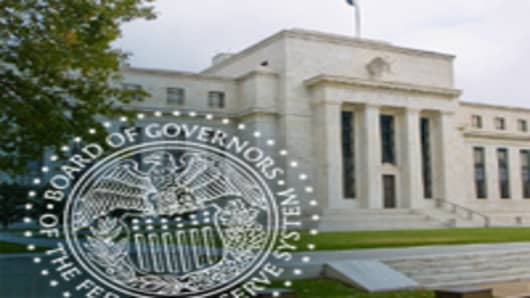If that’s the case, there’s also an argument that a rate cut certainly can’t hurt at this point, which may be why some believe the market is pricing in one.
So, if a rate cut is the right medicine, there’s also the question about whether it should be coordinated with other central banks, especially the European Central Bank, which has this far resisted.
Supporters say coordinated – if not entirely simultaneous – action – will have a more powerful impact on financial markets, underscoring the global nature of the problem as well as a unified commitment to battle it.
“I think you're going to see a significant global move," Pimco co-CEO Mohamed El-Erian told CBNC."Whether it's coordinated or correlated doesn't really matter as long as it is simultaneous across many jurisdictions."
“It’s imperative for the ECB to cut,” says CNBC contributor Vince Farrell, a principal of Scotsman Capital. “It’s well-behind [the curve].”
Farrell is among those who don’t think the Fed will cut rates. Indeed, there’s also no shortage of reasons for the central bank to hold pat.
The Reasons Against a Rate Cut
For some time now, economists have argued that you can’t fight a liquidity problem with rate cuts, which may explain the Fed's previous moves have done little, if anything.
A recent study of major banking crises by two IMF economists concluded that monetary policy appeared to be neutral at best.
The Fed – and Treasury department — may have already come to that conclusion and have demonstrated extraordinary innovation and resourcefulness in using new and existing tools to attack the liquidity problem.
The Fed’s decision to create a special lending facility for the commercial paper market Tuesday is the latest move and quickly followed its decision to pay interest on bank reserves Monday.
Some say that’s as good—or better – than an interest rate cut.
“In a time of credit stress, the job of a central bank is to be a lender of last resort,” says Cato’s O’Driscoll, who says the Fed “has abandoned the federal funds market,” where the rate has been well below the central bank’s target level at various times in the financial crisis.
"Paying interest on reserves should help us better control the funds rate," Bernanke explained Tuesday, in referring to the move.
The final – and perhaps most irrefutable – argument against a rate cut is that they’re already very low at 2 percent and the Fed has very little ammunition left ... and it might need it later.
Rate cutting as crisis management got the Bank of Japan nowhere during its decade-long fight against the deflation of an asset bubble.
And the few Fed members who remain from the Alan Greenspan era are well aware that taking rates down to 1 percent at that time probably wasn’t a good idea, if only because it set a bottom.




